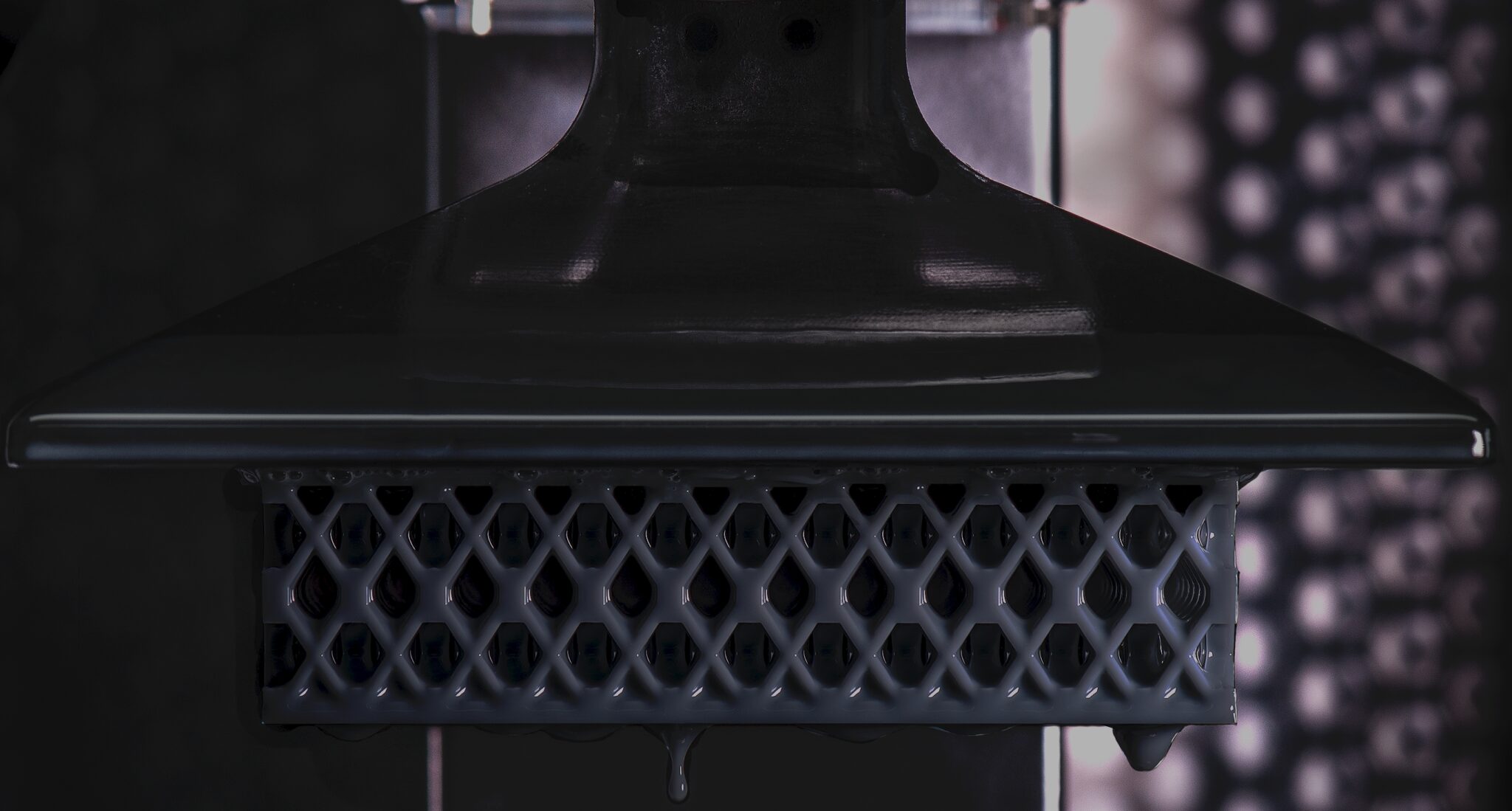

Lattices are three-dimensional structures that consist of a series of repeating unit cells created by a pattern of intersecting beams and nodes. These micro-architectures have gained popularity in recent years for a number of reasons, including their ability to enable the production of lightweight parts that have comparable material characteristics and structural integrity to legacy components — and often with less excess material. Lattices are also employed to absorb impact, noise, and damp vibration, because they can have low stiffness and the ability to bear and recover from strains.
This has some perhaps surprising real-world applications. Impressed by what our partners at Carbon are accomplishing with their pioneering Digital Light Synthesis™ technology, sportswear giant Adidas reached out to design a midsole for athletic shoes that incorporates the high impact absorption that lattices provide. The material requirements presented a challenge: the sole needed to be resilient and flexible, to provide an excellent rebound, and minimize shock to the athlete’s body. Carbon’s technology rose to the challenge — the result is the stunning, high-performance Adidas Futurecraft 4D midsole, which offers exceptional impact absorption at small component volume.
Here’s what product managers need to know about how lattices can be used to provide maximum vibration damping and energy damping.
In general, the small size and complex geometry of lattices makes them difficult to create through traditional subtractive manufacturing methods; lattices are therefore typically produced via 3D printing processes.
A key advantage of designing for additive manufacturing is that it allows product managers to implement an inverse design process, meaning they can design optimal material characteristics to fit the given application instead of trying to find a suitable material that already exists.
Some materials are inherently better at dissipating energy — EPU 40 is a better vibration damping material than EPU 41, for instance — and choosing a material that aligns with the required characteristics of the part applications enables manufacturers to increase the impact absorption of their components.
While material choice plays a significant role in a lattice’s ability to damp vibration and dissipate energy, the design of the lattice, in most cases, has a more significant effect on a part’s damping effect. At a macro level, lattice structures are typically designed to bend or buckle upon impact. Bending lattices are very elastic and springy, while buckling lattices allow individual beams to give away and bend, which is extremely effective at dissipating energy. Free layer damping treatments can also be applied to parts.
On a granular level, the repeating pattern of beams and nodes that makes up the lattice are called the unit cells. There is an enormous number of potential combinations of nodes and beams, but open, sparse unit cells typically create soft lattices, while unit cells with a higher concentration of triangles and beams generally create rigid structures.
Cell type, size, and orientation have a direct effect on the material damping ratio of a lattice, and changes in the relative thickness of the beams compared to the cell unit size will cause the lattice to exhibit drastically different behavior, as well — all of which must be taken into consideration to maximize impact absorption and energy dissipation.
While additive methods have allowed manufacturers to create things that previously were not possible, lattices must still be designed well to effectively fulfill their intended functions. By incorporating design for additive manufacturing (DFAM) principles, engineers can help use the specific properties of the 3D printing process to ensure that their lattice structures are maximally effective at absorbing impact, sound, and vibration.
Two important DFAM considerations are the structure and orientation of a lattice’s unit cells. The lattice must first and foremost be printable. This includes factoring considerations like printing process, print orientation, and sometimes support structures into design to ensure the part’s viability.
Lattice cell orientation inherently creates anisotropic parts, meaning that the components behave differently in one direction than another. This isn’t necessarily a disadvantage, however — if a lattice needs to behave in one direction (such as is the case with buckling lattices) product managers should ensure that the structure’s cell orientation is properly aligned in that direction.
When properly implemented, DFAM enables manufacturers to get around the limitations of the legacy manufacturing methods and make completely new things possible. In many cases, additively produced parts that incorporate lattice structures are of comparable, if not superior, quality to parts created via legacy processes.
Lattice structures are a versatile and effective method by which to create parts that absorb and dissipate impact, sound, and vibration. The key considerations in lattice design involve clearly defining requirements up front, selecting appropriate materials based on these requirements and the lattice’s desired functionality, and architecting the structure of the lattice accordingly. Choosing the best material for vibration damping based on required performance characteristics is the ideal place to start, as this will help maximize the part’s energy dissipation and impact absorption capabilities.
SyBridge is committed to using cutting edge technologies, as well as tried-and-true methods, to make every manufacturing more efficient and more effective. We work with each of our customers to optimize parts for design and manufacturability, because we take pride in delivering superior quality components on-time and at competitive prices. Contact us today to find out how we can assist.
Forget typical cycle times. We're pushing the boundaries of conformal cooling. While traditional approaches deliver…
Forget typical cycle times. We're pushing the boundaries of conformal cooling. While traditional approaches deliver…
From left to right: Brayden Janak (apprentice); Logan Vifaquain (CNC machining, Programming and CMM); Ron…
SyBridge Technologies is proud to announce we have been awarded the 2023 General Motors Supplier…
Today, designers and engineers are accustomed to working with digital tools in their day-to-day jobs.…
Optimizing Your Injection Molding Process for Cost-Effective Manufacturing Excellence In today’s competitive landscape, manufacturers are…